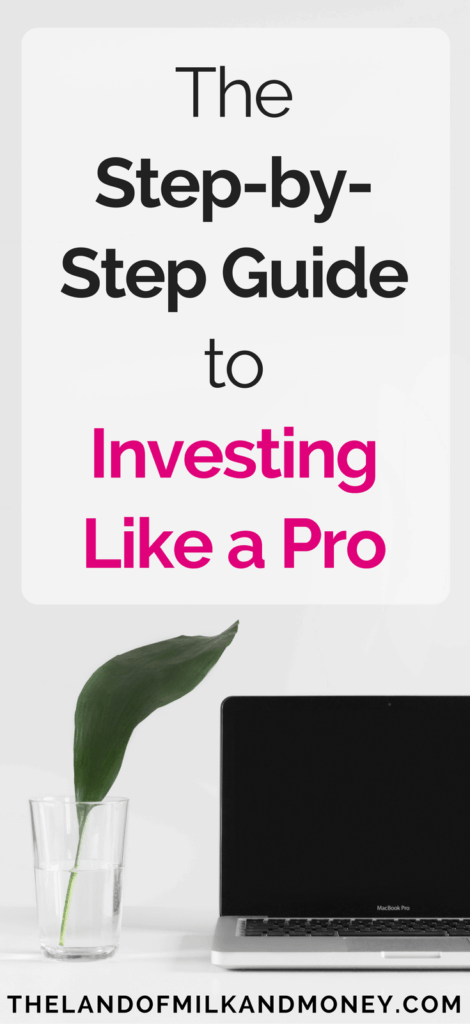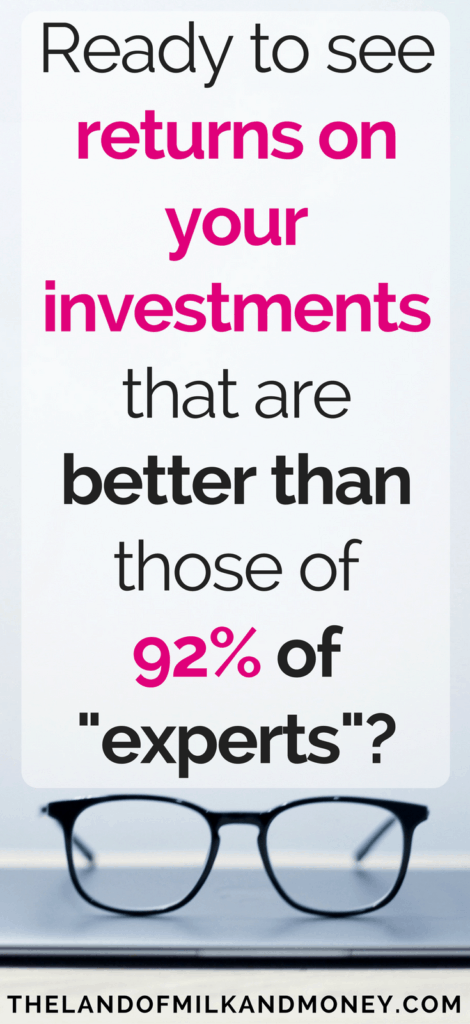Welcome to Step 5 of the Step-by-Step Guide to Investing Like a Pro!
(If you can think of a brilliant James Bond-related pun for the title of this post, let me know in the comments. I tried to think of one and failed miserably. I know, I’m as disappointed as you are.)
Congratulations on making it this far!
Alternatively, if you’ve just stumbled here from some distant corner of the internet, I would strongly recommend that you read the earlier Steps of this Guide.
- Step 1: The Beginners’ Guide To Investing Like An Expert (Including How To Beat The Professionals)
- Step 2: How To Invest Your Money For The Best Returns (For The Least Amount Of Cost and Effort)
- Step 3: How To Prepare For Risks To Your Investments – And Turn Them Into Rewards
- Step 4: The Simplest Investment Portfolio You Will Ever Need
These will hopefully set you on your way to seeing just how easy it can be to start investing.
In particular, they will show you that the best way for you to make your money work for you is also one of the cheapest and simplest!

However, the road to financial freedom isn’t all rainbows and unicorns. As you saw in Step 3 and Step 4, there are some risks involved – as with all investments.
So the aim of this post is to introduce you to bonds. They’re going to be the steadying hand in your portfolio.
In particular, when times are a bit rough, they’ll be there to help partly protect your other investments from the storm.
They may not be entirely right for you, as we’ll cover in Step 6.
For example, in my case, I don’t currently hold any bonds in my investment portfolio. I’ve explained why in Step 4 and will further elaborate on this in Step 6.
But I fully expect to add bonds to my portfolio at some time in the near future. And you probably should too.
It’s for this reason that even if you believe that you don’t need bonds now, you should at least know what they are. And, importantly, it’s very useful to be aware of the significant role they can play as part of your investment strategy.
What’s a bond?
When you purchase a bond, you are essentially providing a loan to a company or the government, with government bonds generally being lower risk. Your “loan” will be at a certain annual interest rate that the borrower agrees to pay to you over a certain period of time (the ”term”).
The value of bonds generally increases steadily over time, but not at the same rate as stocks.
Which begs the question: why would you want to invest in an asset class that performs worse than others?
Because bonds are less volatile than shares. This means that while your overall rate of return may be slightly less than if you were to invest 100% in stocks, your portfolio will still continue to rise in value over time without the more dramatic rises and falls seen in the stock market.
In particular, if there is a stock market crash, having the steadier hand of bonds in your portfolio will ensure that your portfolio value doesn’t drop to the same extent as the market.
In addition to mitigating the risks posed by a volatile stock market, bonds also protect your portfolio against deflation.
Generally speaking, we usually see about a 3% rate of inflation from year to year. That is, the price of things rises about 3%.
This means that if you put $100 under your mattress this year and pull it out next year after a 3% rate of inflation has taken effect, your money will only be able to buy $97 worth of goods as everything will have increased in value by 3%.
Deflation, on the other hand, is when the price of things falls. Let’s use the same mattress scenario but with a 5% annual rate of deflation. The price of goods will have fallen by 5% so your money will now be able to buy $105 worth of goods.
Sounds great, right? Except that in such times, your other investments will be suffering enormously.
But for bonds, deflation actually works in their favour. Say you’ve purchased $10,000 in bonds, meaning that you’ve lent a company or a government $10,000. When you get that money back during a deflationary period, you’ll be able to buy more with that $10,000 than when you originally lent it.
This, in turn, will help to counterbalance the losses you’ve incurred from your other investments. Consequently, this means that your overall portfolio value will not be as affected as if you’d only invested in stocks, for example.
It’s for this same reason that inflation is not a friend of bonds. This is because when you get the money back that you lent after a period of inflation, you’ll be able to buy less with your money than when you originally lent it. However, interest rates on bonds generally try to address this by being higher than standard interest rates.
How do I buy bonds?
While you can look into purchasing individual bonds, a far easier option is to buy into an index fund that provides broad exposure to the bond market.
VBTLX is one such fund. It is described as providing “broad exposure to U.S. investment grade bonds. Reflecting this goal, the fund invests about 30% in corporate bonds and 70% in U.S. government bonds”.
I’ve already covered in Step 1 and Step 2 of this Guide why I believe that index funds are the best investment option. They’re low fee and, in the case of index funds that track the stock market, are less risky than owning individual stocks.
The same is true for bond index funds. At the time of writing, VBTLX holds 8,420 bonds with a very low expense ratio (i.e. annual fee) of 0.05%.
None of the bonds are rated less than Baa, meaning that they are all “investment grade” This means that they are “bonds that are judged by the rating agency as likely enough to meet payment obligations that banks are allowed to invest in them” (thanks, Wikipedia).
That is, when you invest in VBTLX, you’re likely to get your money back.
Owning individual bonds can be risky. If the lendee (i.e. the recipient of your loan) defaults (i.e. can no longer pay you back), you would lose all of your money.
However, by owning part of VBTLX and thus a portion of the 8,420 bonds held within this fund, you’re mitigating this risk. After all, one bond defaulting in a pool of 8,420 would barely register.
Buying VBTLX alongside the previously recommended VTSAX (see Step 4) has an additional benefit. With only two purchases, you’ve built your entire investment portfolio!
It takes a few minutes to set each of them up and even less time to top them up periodically.
But in a few simple, quick steps, you’ve effectively set yourself up to reach financial freedom!
Now, are you ready to take all of this knowledge and put it into action?
If so, check out Step 6: How To Build Your Very Own Expert Investment Portfolio.
Read the entire Step-by-Step Guide to Investing Like a Pro here:
Step 1: The Beginners’ Guide To Investing Like An Expert (Including How To Beat The Professionals)
Step 2: How To Invest Your Money For The Best Returns (For The Least Amount Of Cost and Effort)
Step 3: How To Prepare For Risks To Your Investments – And Turn Them Into Rewards
Step 4: The Simplest Investment Portfolio You Will Ever Need
Step 5: Why Bonds May Save Your Life (Or At Least Your Portfolio)
Step 6: How To Build Your Very Own Expert Investment Portfolio




